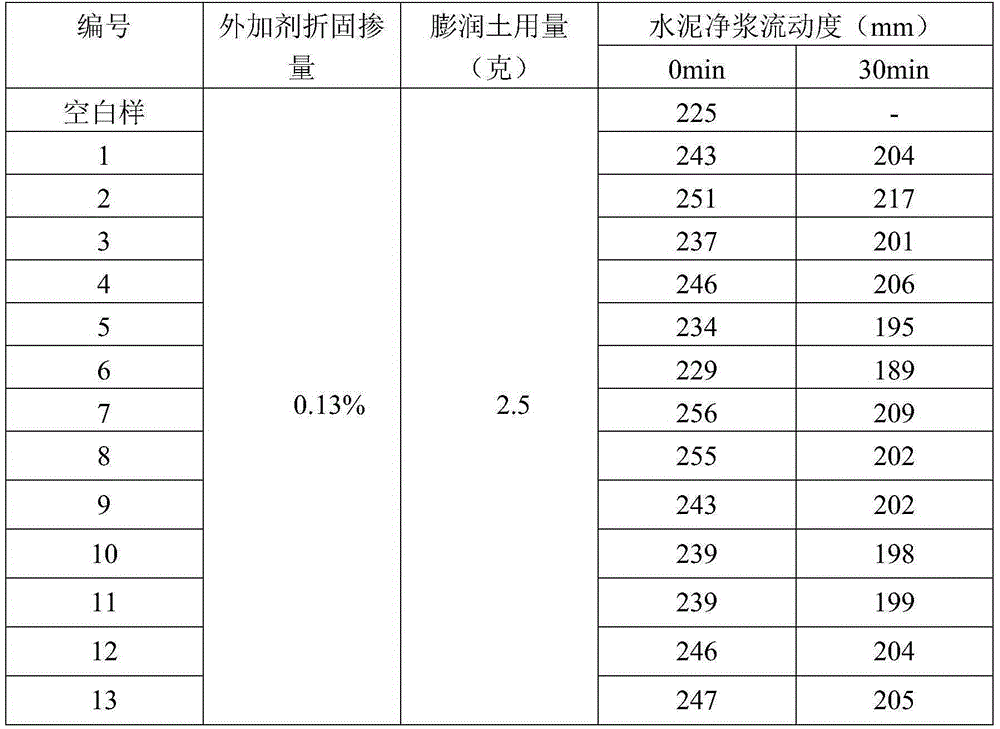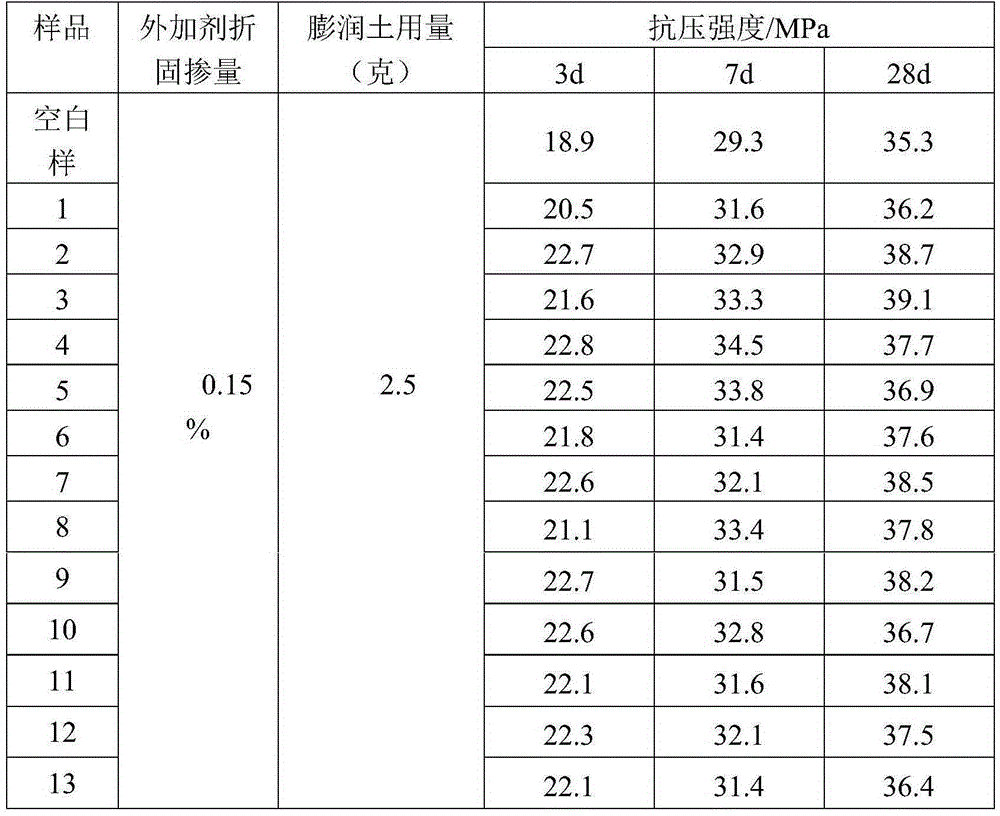Preparing method for polycarboxylate-type anti-mud water reducer with modified side chain terminal group
A technology of polycarboxylate and terminal group modification, which is applied in the field of polycarboxylate water reducer for cement concrete, can solve the problems of increasing uncertainty, complicated process, and affecting copolymerization reaction, so as to reduce the difficulty of reaction and improve The effect of reaction efficiency and simple operation
- Summary
- Abstract
- Description
- Claims
- Application Information
AI Technical Summary
Problems solved by technology
Method used
Image
Examples
Embodiment 1
[0022] 1) Preparation of azido-terminated polycarboxylate water reducer: dissolve 1 mol of dry solid polycarboxylate water reducer (the side chain polyether is TPEG with a molecular weight of 2400) in tetrahydrofuran (THF), add 10.1 mol thionyl chloride, add 20mol sodium azide after reacting for 30min, react under reduced pressure after reacting for 2h to obtain azide-terminated polycarboxylate water reducer;
[0023] 2) Preparation of phenyl-terminated / pyridyl-based polycarboxylic acid-based mud-resistance superplasticizer: 1 mol of azido-terminated polycarboxylic acid-based water-reducer obtained in step 1) was dissolved in 10 mol of alkyne phenyl / pyridylbenzenesulfonic acid. In tetrahydrofuran (THF), react under the catalysis of 0.001molCuBr / pentamethyldiethylenetriamine (PMDETA) for 10min and then desalt through neutral alumina to obtain the phenyl-terminated / pyridyl polycarboxylate anti-sludge Water reducing agent.
Embodiment 2
[0025] 1) Preparation of azido-terminated polycarboxylate water-reducer: dissolve 1 mol of dry solid polycarboxylate water-reducer (its side chain polyether is HPEG with a molecular weight of 2400) in dimethyl sulfoxide (DMSO) In, add 10.2 thionyl chloride, add 21mol sodium azide after reacting for 35 minutes, react under reduced pressure after reacting for 2.5 hours to obtain azido-terminated polycarboxylate water reducer;
[0026] 2) Preparation of phenyl-terminated / pyridine-based polycarboxylic acid-based anti-sludge water-reducer: 1 mol of azido-terminated polycarboxylic acid-based water-reducer obtained in step 1) was dissolved in dimethyl by adding 10 mol of phenol-4-ethynyl In base sulfoxide (DMSO), react for 15 minutes under the catalysis of 0.002molCuCl / HMTETA, and then desalinate through neutral alumina to obtain phenyl-terminated / pyridyl-based polycarboxylic acid-based mud-resistance and water-reducer.
Embodiment 3
[0028] 1) Preparation of azido-terminated polycarboxylate water reducer: dissolve 1 mol of dry solid polycarboxylate water reducer (the side chain polyether is TPEG with a molecular weight of 1200) in N,N-dimethyl formaldehyde Add 10.3 mol of thionyl chloride to amide (DMF), add 22 mol of sodium azide after reacting for 40 minutes, react for 3 hours and then distill under reduced pressure to obtain azide-terminated polycarboxylate water reducer;
[0029] 2) Preparation of phenyl-terminated / pyridine-based polycarboxylic acid-based anti-sludge water-reducer: add 20 mol of p-methylphenylacetylene N,N-Di In methylformamide (DMF), react under the catalysis of 0.03molCuBr / tetra[(2-pyridyl)methyl]ethylenediamine (TPEN) for 50min and then desalt through neutral alumina to obtain terminal phenyl / Pyridyl polycarboxylate anti-mud superplasticizer.
PUM
 Login to View More
Login to View More Abstract
Description
Claims
Application Information
 Login to View More
Login to View More - R&D
- Intellectual Property
- Life Sciences
- Materials
- Tech Scout
- Unparalleled Data Quality
- Higher Quality Content
- 60% Fewer Hallucinations
Browse by: Latest US Patents, China's latest patents, Technical Efficacy Thesaurus, Application Domain, Technology Topic, Popular Technical Reports.
© 2025 PatSnap. All rights reserved.Legal|Privacy policy|Modern Slavery Act Transparency Statement|Sitemap|About US| Contact US: help@patsnap.com


